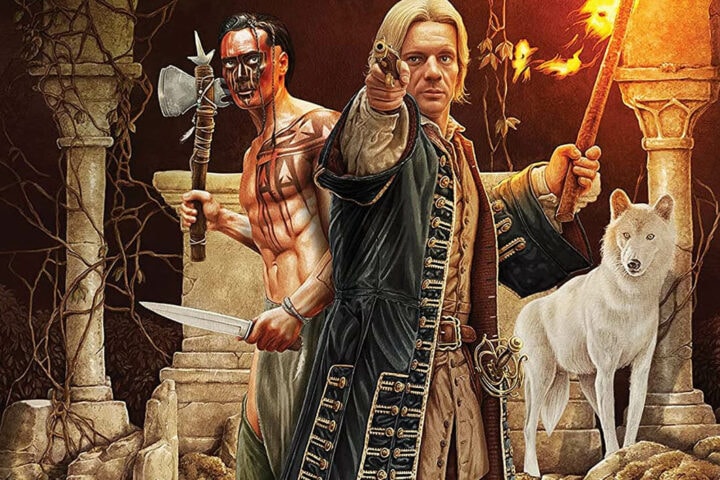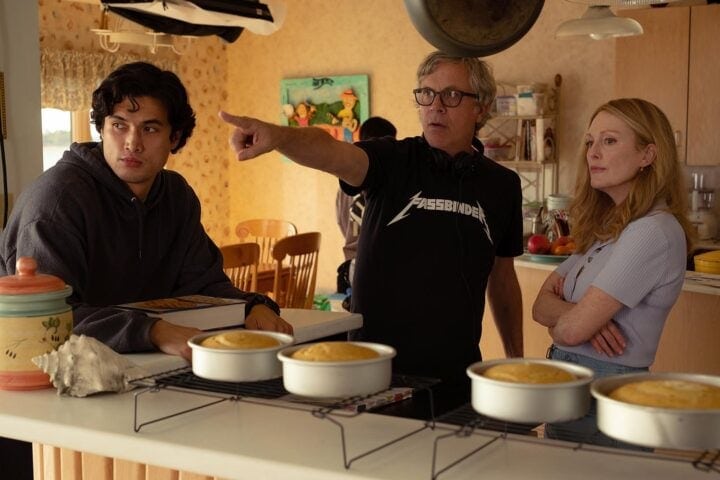Paul Vecchiali’s moody, labyrinthine The Strangler suggests the visual style of Jacques Demy’s Model Shop coupled with the psychosexual fervor of Michael Powell’s Peeping Tom. Or maybe it’s more accurate to say that it’s a queer version of Jean-Pierre Melville’s Le Samouraï by way of the story machinations of Claude Chabrol’s The Champagne Murders. Either way, it’s clear that Vecchiali’s interests are cinephilic in nature, and that this 1970 psychological thriller was his self-conscious attempt during the waning years of the Nouvelle Vague to take the movement’s genre-defying sensibilities in a new direction.
Throughout, Vecchiali is concerned less with plot than with mood and setting, which he largely establishes by showing people moving around colorful apartments and through the bustling streets of Paris. Take Anna (Eva Simonet), who rushes to a television station fearing for her safety after Simon (Julien Guiomar), an inspector posing as an investigative reporter, explains the circumstances involving a recent series of murders. Much like in Jacques Rivette’s Paris Belongs to Us, the on-location photography and the neatly decorated interiors are very much The Strangler’s focal point, and their prominence calls into question how the story beats should be received amid the increasingly perverse visual brio that Vecchiali indulges.
After all, the identity of the film’s killer is no mystery: It’s Émile (Jacques Perrin), a loner who enjoys crocheting white scarves when he isn’t wrapping them around women’s necks late at night. Yet Vecchiali doesn’t indulge Émile’s apparent psychosis by lingering on or heightening the violence. In fact, he shoots the murders in a theatrical fashion, with the victims seeming to almost pose for the camera as Émile snuffs the life out of them using minimal force.
In sync with Vecchiali’s noir-tinged, proto-giallo ambitions, doppelgängers, aliases, and sexual dangers abound across the film. Émile’s heavily suggested homosexuality becomes significant as he explains that he kills women instead of men because he cannot stand to see their loneliness; he views his nocturnal prowls as mercy killings and a means to revisit his childhood trauma, when he saw a woman strangled with a white scarf one evening. Meanwhile, he’s making thinly veiled sexual advances through letters and phone calls to Simon, whose bisexuality is revealed after he sleeps with Anna, who questions if she’s the first woman he’s ever been with.
To what extent these explanations and revelations are meant to be taken seriously as either social or psychological commentary remains fascinatingly unclear throughout The Strangler, as its tongue-in-cheek humor tends to dominate all else. Little transpires in the film at the level of meaningful character revelation. In its place are an assortment of asides and non sequiturs, as when Muni (a recurring player in Luis Buñuel’s later films), shows up in a brief cameo as a woman on the arm of a man (Marcel Gassouk), billed in the credits as “The Homosexual Husband,” who complains, apropos of nothing, that he cannot find the right man in his life.
The Strangler can feel at once weighty and lightweight given all these strange inclusions, which always seem to be pulling the film back from a more disciplined, darker focus on the nature of its characters’ desires. This is especially true in scenes involving Le Chacal (Paul Barge), a thief who follows Émile’s around to rob the freshly strangled. The character’s borderline cartoonish presence further announces the film’s devotion to the carnivalesque as Vecchiali stylizes his way toward something like a treatise on sexuality in the gangster and serial killer film.
But even that winds up feeling forsaken in the name of Vecchiali’s style as an end in itself. An early scene, in which Émile calls Simon, best sums up the film. When Simon picks up the phone, Émile says, “I killed. There’s no reason,” then hangs up. Take that as a direct address from Vecchiali: to search not for logic or motive, but to bask in a potpourri of oddball suggestions.
Since 2001, we've brought you uncompromising, candid takes on the world of film, music, television, video games, theater, and more. Independently owned and operated publications like Slant have been hit hard in recent years, but we’re committed to keeping our content free and accessible—meaning no paywalls or fees.
If you like what we do, please consider subscribing to our Patreon or making a donation.



